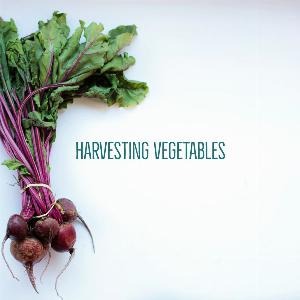Harvest beets when the roots are two to five inches across and before the first frost. Leave about one half inch of leaf stem and store in a root cellar at thirty-two to forty degrees. Cabbage is ready when the heads are well filled and hard. Early cabbage, best for salads and coleslaw, should be used soon after harvest. Late varieties of cabbage, good for cooking and sauerkraut, will keep for a while when stored in a cellar, shed or refrigerator. Carrots can be pulled as soon as they’re big enough to suit you. Pick cantaloupe when the fruit changes from green to yellow or tan, and the netting on the skin becomes very pronounced. The stem will also slip cleanly away from the fruit with only slight pressure. Cauliflower is ready as soon as the heads are firm and the desired size. If cauliflower is left too long on the plant, the heads can be loose or discolored. When onions are ready to pull, their tops begin to turn yellow and fall over. Break the remaining tops down with a rake or by hand and leave the onions in the ground until all the tops are dead. Then pull all the plants and spread them in the sun for three or four days with the tops covering the onions. Cut off the tops and store in mesh bags in a cool, dry location. Parsnips shouldn’t be harvested until after frost for the best flavor. Both parsnips and turnips can be left in the ground for winter harvest if you cover them with a thick layer of mulch. Potatoes are ready to dig after the tops have died back, but you can rob one or two new potatoes from a hill in midsummer without harming the fall crop. Pick pumpkins when the rinds are hard and a deep, solid orange, but before the first hard frost. Winter squash are ready when the rind is hard and has turned a solid color, but before a really hard frost. Cure both pumpkins and squash at room temperature for a week or two, then store in a cool dry place. Watermelons turn light green where they rest on the ground, and the tendril on the leaf closest to the melon commonly dries up when the melon is ripe. If you tap the watermelons for a ripe sound, do it early in the morning as the heat of the day will cause all melons to give a ripe sound.




